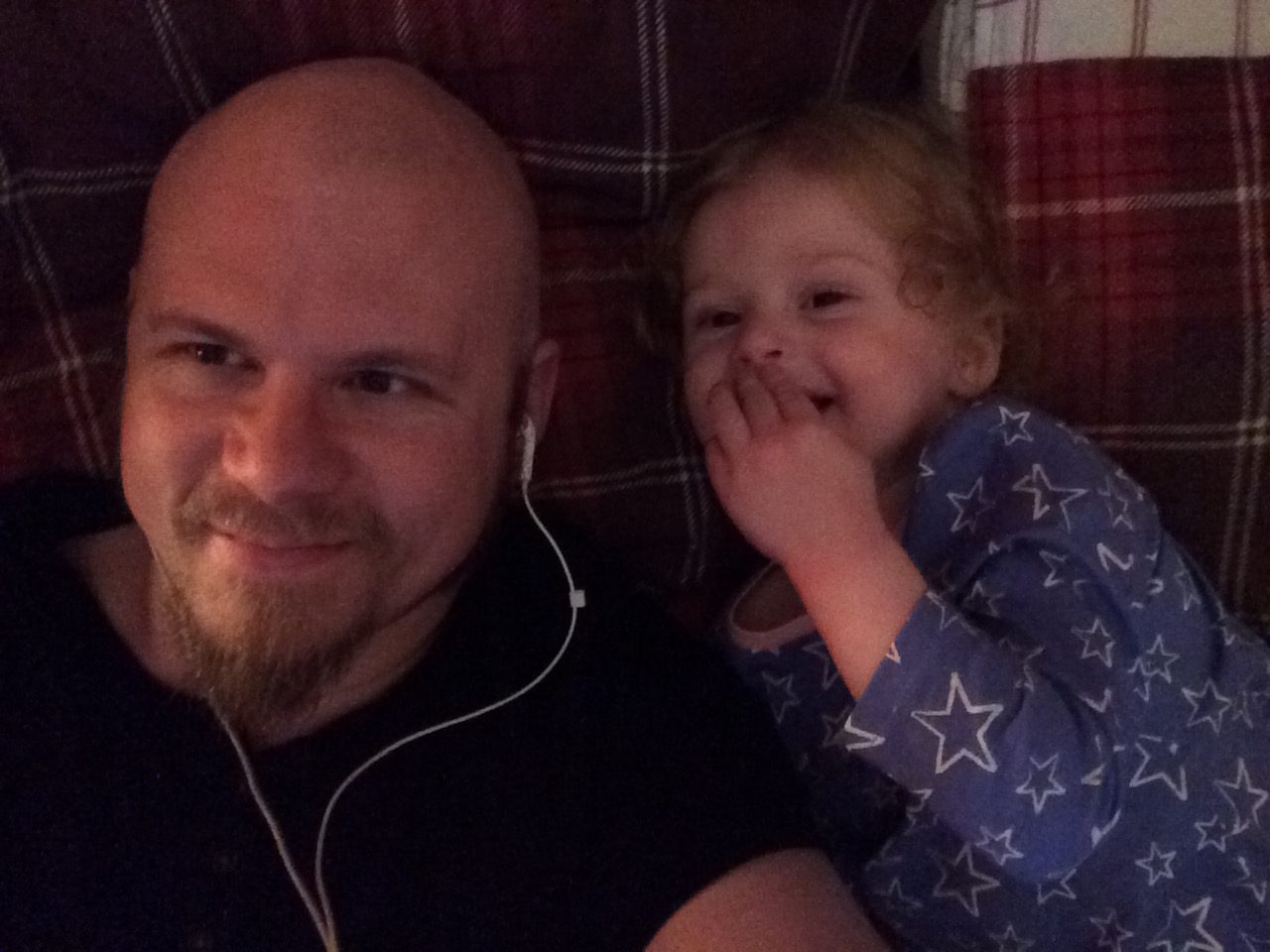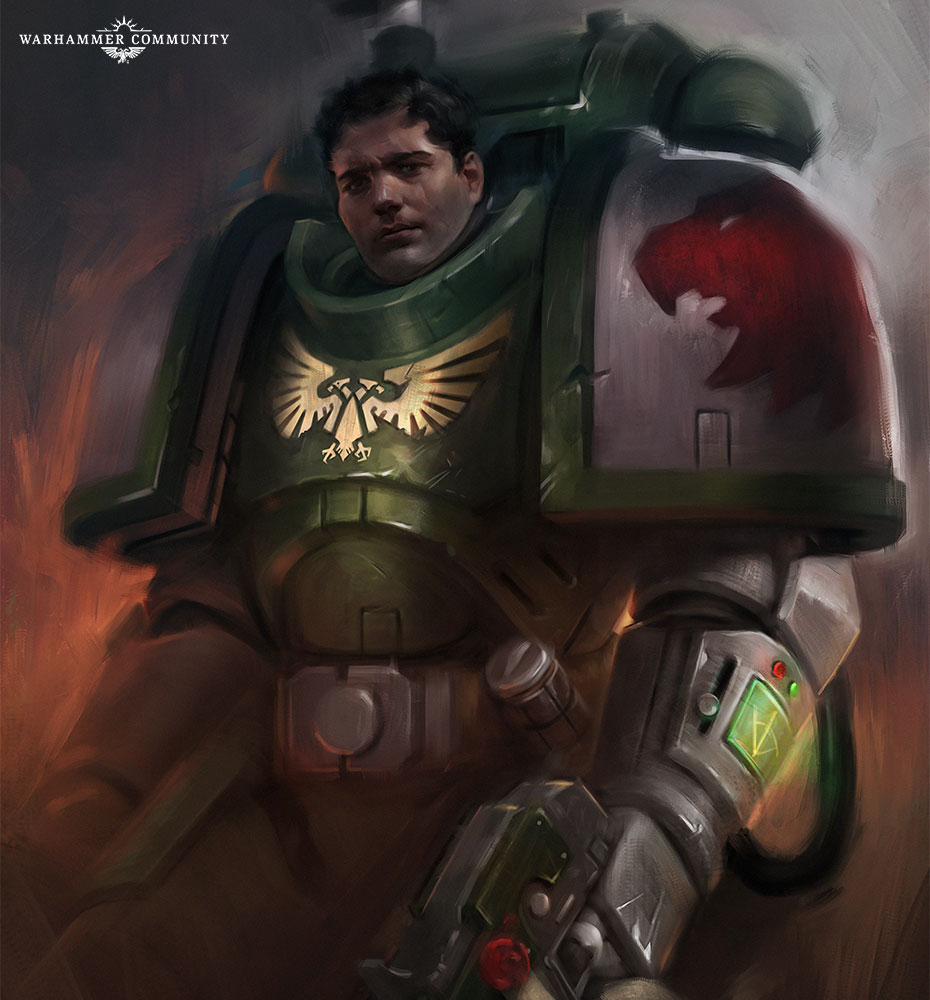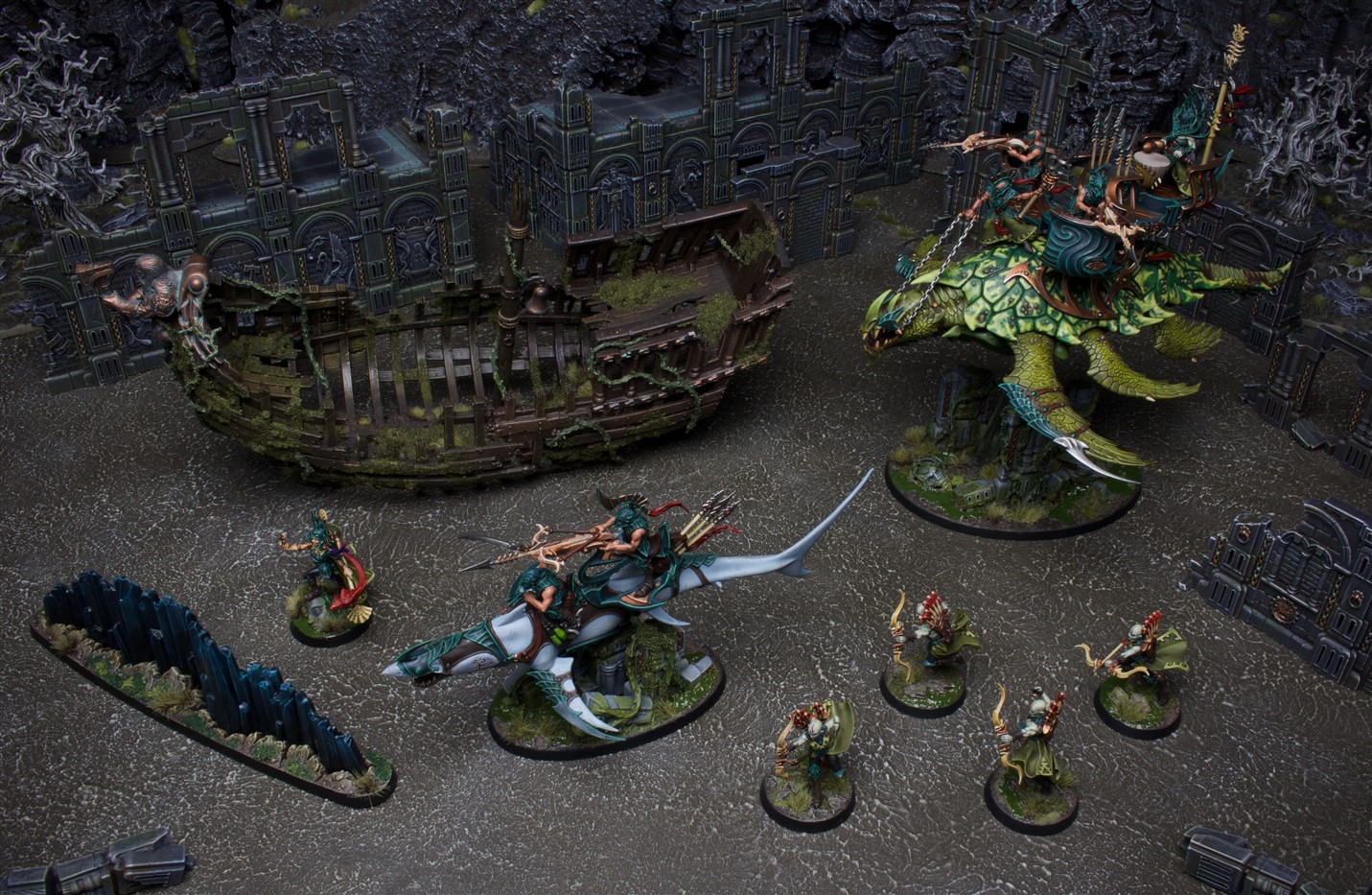A quick foreword: I would just like to say my deepest thanks to Edwin Moriarty and James M Hewitt for helping this come together and to Aaron for not only agreeing to be interviewed but writing the level of depth that he went into with these answers.
1. How did you get into the hobby and the writing for Black Library gig?
Like everyone of a certain (increasingly distinguished) age, I got into the hobby through Space Crusade and Heroquest. They were the ultimate gateway games for pretty much everyone in their late 30s and early 40s. After that, I picked up Space Fleet and Warhammer 40,000, though I spent most of my hobby existence playing Warhammer Fantasy Battles.
When it comes to Black Library, that was just dumb luck and a writing sample they really liked. I want to invent some awesome tale here with twists, turns, thrills, and spills, but it’s really just that boring.
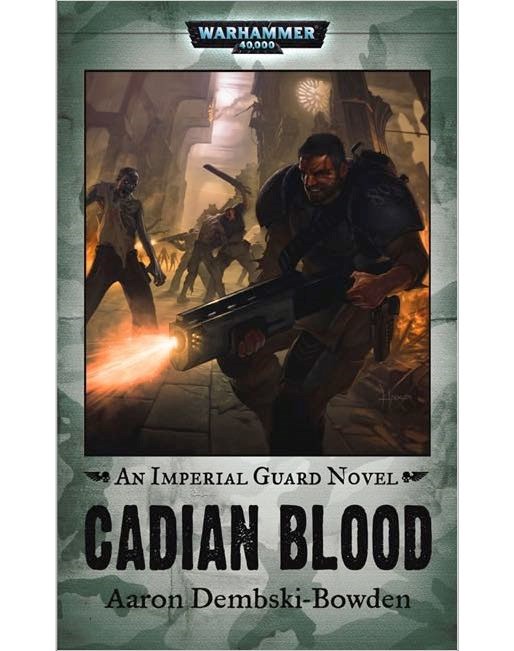
2. You’ve also written about League of Legends for Riot Games. Is the process of dealing with their world different than GW’s? Are there any other properties you would like to work on in the future?
I get a lot of offers to play hired gun for other IPs, which I almost always turn down. And you might think that’d make you jaded or arrogant, but it sort of does the opposite. It keeps you constantly taking stock of where you’re at, and being grateful for the offers and opportunities.
With LoL, I was working with Laurie Goulding, who I’d worked with at Black Library for years, so the vibe was the same in most respects. The one difference is that they came to me and asked if I would tackle a specific project, with a specific couple of characters: Ryze and Brand, in Brand’s origin story. With Black Library, from my earliest days, it’s pretty much been a process of them nodding to whatever story I want to tell and bending over backwards to help me. Their pressure only ever comes from how long it takes me to write anything.
In terms of other stuff, I’d probably sell my soul for the chance to work on anything related to Dune. I’d like to do Star Wars at some point too, though I confess I’ve found myself a little burned out over the course of the new era. Which is fine, right? Franchises evolve, people change. I was never ‘Ride or Die’ for the old expanded universe or anything, so it’s not a matter of loyalty to what came before. The new High Republic stuff looks dead brilliant, and anything tied into Rebels or Clone Wars is awesome.
I’d never turn down World of WarCraft, that’s for sure. I met my wife Katie in WoW and a lot of my friends still play it, so it’s dear to our hearts. One of the strangest and best things to happen in my career so far is becoming kinda-sorta pals with Chris Metzen after he left Blizzard. I adore that man. He’s all heart and soul, and that’s a great way to be. I wish we’d had a chance to collaborate on WoW.
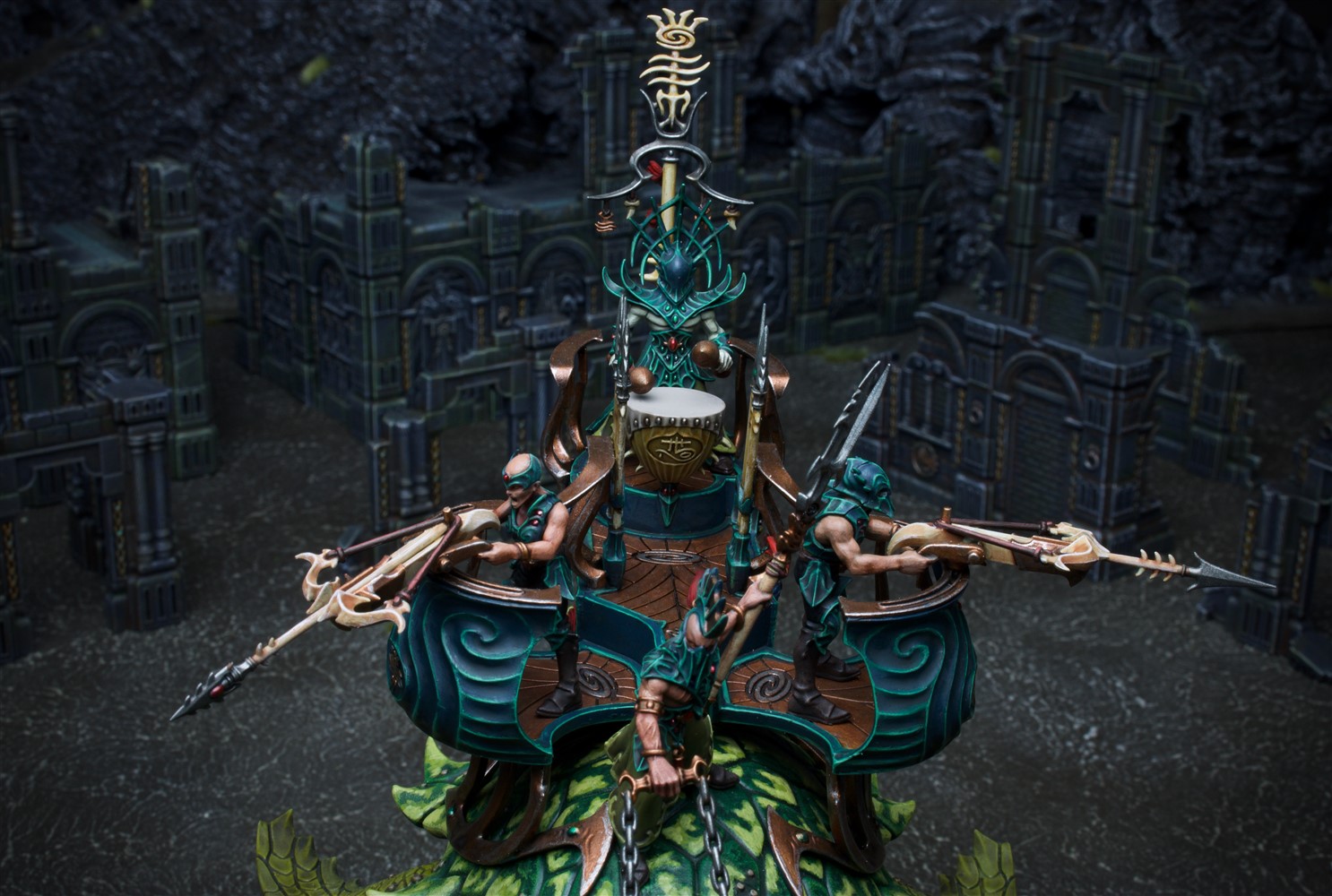
3. What are your current hobby projects? Do you have any favourite models that you have painted recently?
I play Necromunda and Age of Sigmar more than anything else. Back in Ye Olde Days, I led 4,000pts. of unpainted High Elves to dubious glory. I paint so glacially slowly, though. Until a couple of years ago, I’d only ever finished about 10 or so models in my entire life, so I’d feel this surge of immense shame every time I took a grey plastic army to war… but not enough shame to actually do anything about it.
Right now, I’m working on my Idoneth Deepkin, and a Sector Mechanicus board for Necromunda. The former are from a Tale of Four Warlords that I did with Phil Kelly, Guy Haley, and Gav Thorpe – and a lovelier bunch of hobbyists you will never meet. We still have a WhatsApp group where we talk hobby, and it’s incredibly motivating. As for the SecMec board, well, that’s basically something I’m doing for my sins.
I (quite rightly and righteously) complain how every Necromunda campaign in history is 75% Van Saar and Enforcers, and I really should be painting my Cawdor gang, but the truth is I’ve also been secretly working on some Palanite Enforcers, so I’m basically the worst kind of hypocrite.
I have two vague Kill Team possibilities on the horizon. The first is a Black Legion civil war, where everyone takes a Black Legion kill team with access to anything that has the CHAOS keyword, to realistically represent the Black Legion doing its thing. The second is my eternal “Tomorrow, I swear…” promise to make a kill team for the Angels Numinous, my own Space Marine Chapter.
At some point I’ll stop betraying my lifelong Fantasy genre love – the dwarven race – and actually paint some of them. I’ve managed to finish a single Kharadron Overlord. Go me.
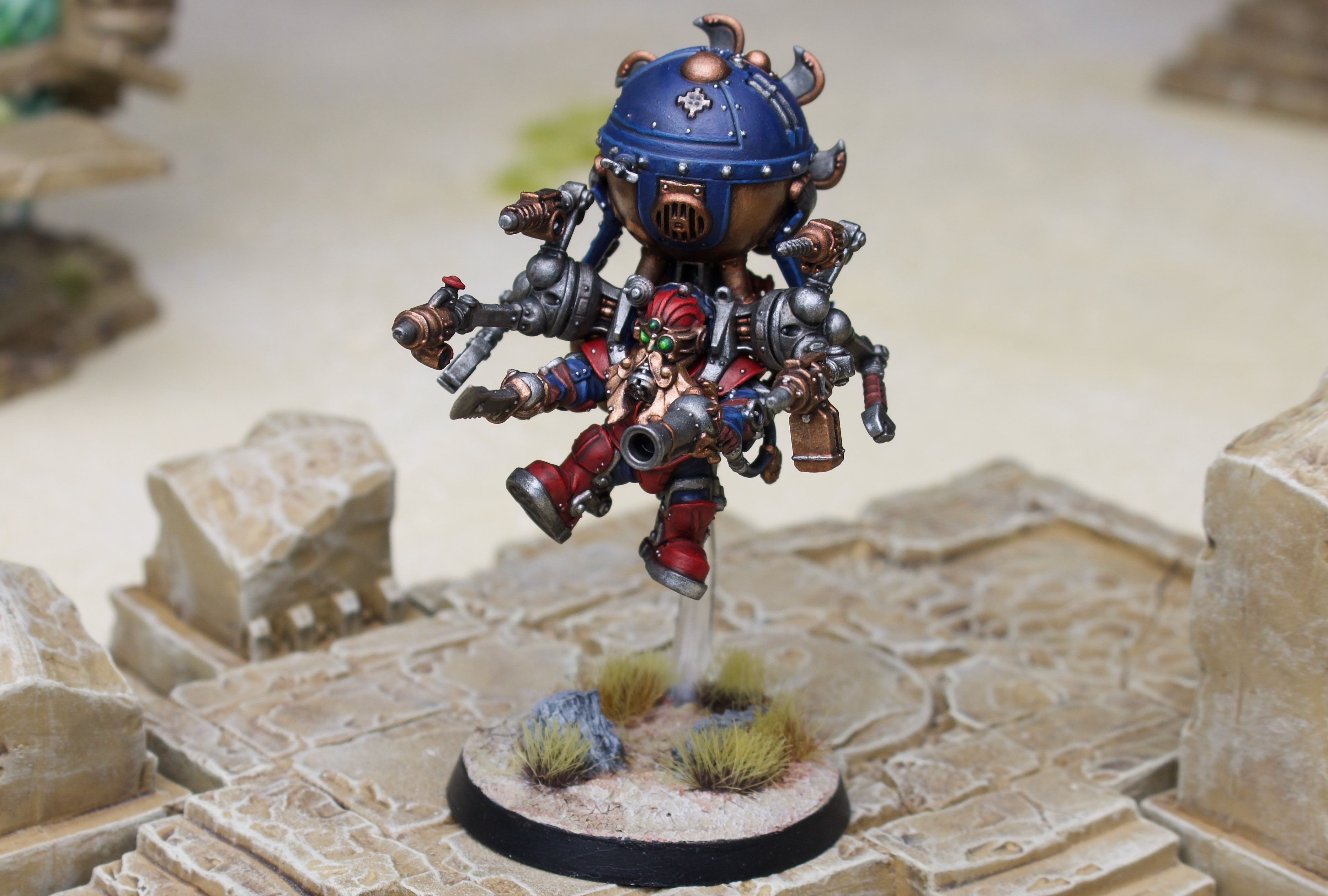
4. Your books are commonly cited as really getting the feel of a faction’s vibe and then exploring and expanding them in really interesting ways. How do you get that insight into each faction’s themes and nailing that portrayal in the books?
That’s another of those things that you never take it for granted no matter how often you hear it. Every time someone says something like that, you get a rush of gratitude that people dug it, and a sense of relief that you pulled it off.
I don’t think you can boil down how it happens, exactly. It’s just the craft. I mean, like, literally: it’s the point of what you’re doing. You’re trying to show what it’s like to live within that universe; how it feels to interact with the people that exist there; what it feels like to walk those worlds and hear those sounds and, crucially, be part of those insane, archaic institutions.
What does it feel like to exist within a failing, fading dystopia that exists through sheer historical inertia? What are the societies within that empire like? How are they credible, when – taken together – they form something so incredible, in every meaning of the word?
So you just write. You think up some characters that you feel have a story worth telling, then you put them in the context of the setting as you see it through your lens. Or, I guess more accurately, how they would see it through their lenses.
5. Is it hard to find a good balance between raw action and going into deeper character/lore areas when writing about 40k? How do you find the sweet spot?
This might be the longest answer I give, so bear with me.
Action for the sake of action is a pretty anaemic proposition. An action beat in a story is like any other scene: it’s telling you something about the characters involved. Something the reader should know, something important and worth conveying to the person who picked up the book. It’s contextualising characters within the world they inhabit. To that end, it has to reveal character and advance the storyline or it’s not part of the story at all. And if it’s not part of the story, why is it there? Readers aren’t idiots. They’ll feel it. Even if they don’t realise exactly what they’re feeling, the scene will feel hollow, no matter how “cool” it might be on the surface.
A reader needs to come out from a battle scene or a duel with a deeper understanding of who fought it. Why did they make the choices they made during the battle? What did it reveal about their flaws and their virtues? Why did they fight at all? Did they have to? And if they had to, what does that say about them? How do they feel about what it says about them? And what did the characters learn about each other?
Again, you don’t need to hammer it in readers’ faces. When it’s done well, it’s basically subtext, though it can also form part of a more explicit reflection on a character.
To give you an example from my own stuff, take the character Argel Tal. Despite being a consummate swordsman with decades of weapons training, had a propensity to use his fists and boots and claws in fights, at first reflecting his zealotry at the cost of discipline, and later reflecting how he was losing the fight against the daemon within him. That’s the most obvious level.
Beneath that, you have the quieter stuff. As he devolves, he spends significant time in battle protecting other characters instead of going for kills himself, directly reflecting the war within himself as he fights to maintain his identity. He’s on a ruinous path in terms of damnation and morality, literally possessed by a daemon, but he keeps trying to maintain his loyalty to those around him. He tries to be good. His flawed, doomed interpretation of good, anyway.
Did readers notice that explicitly? Some probably did, but does it even matter? Part of the reason he went down so well as a character was that his actions reflected his internal conflicts and struggles with morality. It wasn’t “LOOK AT THIS, LOOK AT WHAT HE’S DOING.” It was just threaded through, to click in the back of readers’ minds. Trust the readers. Most of them reward that trust.
It’s the same with revelations or explorations of lore. “Lore”, whether new or something classic you’re re-exploring, has to contextualise the characters and events in the book, applying to both the narrative’s themes and individual character arcs. You’re not showing old lore for the sake of it, you’re doing it because it means something. What does it mean? Why does it mean that? How does that translate to the setting and to the characters within it?
Dig around for long enough and that’s where the story is.
Admittedly, a vocal minority of readers buy licenced IP fiction almost purely for “information” about the settings they like, just dry facts that can be regurgitated onto Reddit or wherever else. Not all, not even most, but definitely some. They’d be totally cool with a colder recitation of said information because they’re not after a story or a deeper examination of the setting, they’re after content. But from the lore-writing side, if you’re putting something in for the sake of revelation or shock value, I’d argue it’s the same as action for the sake of action.
One of the reasons there’s basically nothing new about the Emperor in The Master of Mankind is that it’s a collection of what’s already known about the character, or already believed, but seen through the eyes of people on the ground level of the setting. I’m not a huge fan of repeated revelations. I’m more in favour of taking what’s already known and exploring why people think it, and how it feels to think that stuff, within the world.
I realise this is desperately pretentious. I’m famously guilty for over-analysing all this jazz. It’s one of the many reasons I write so slowly.
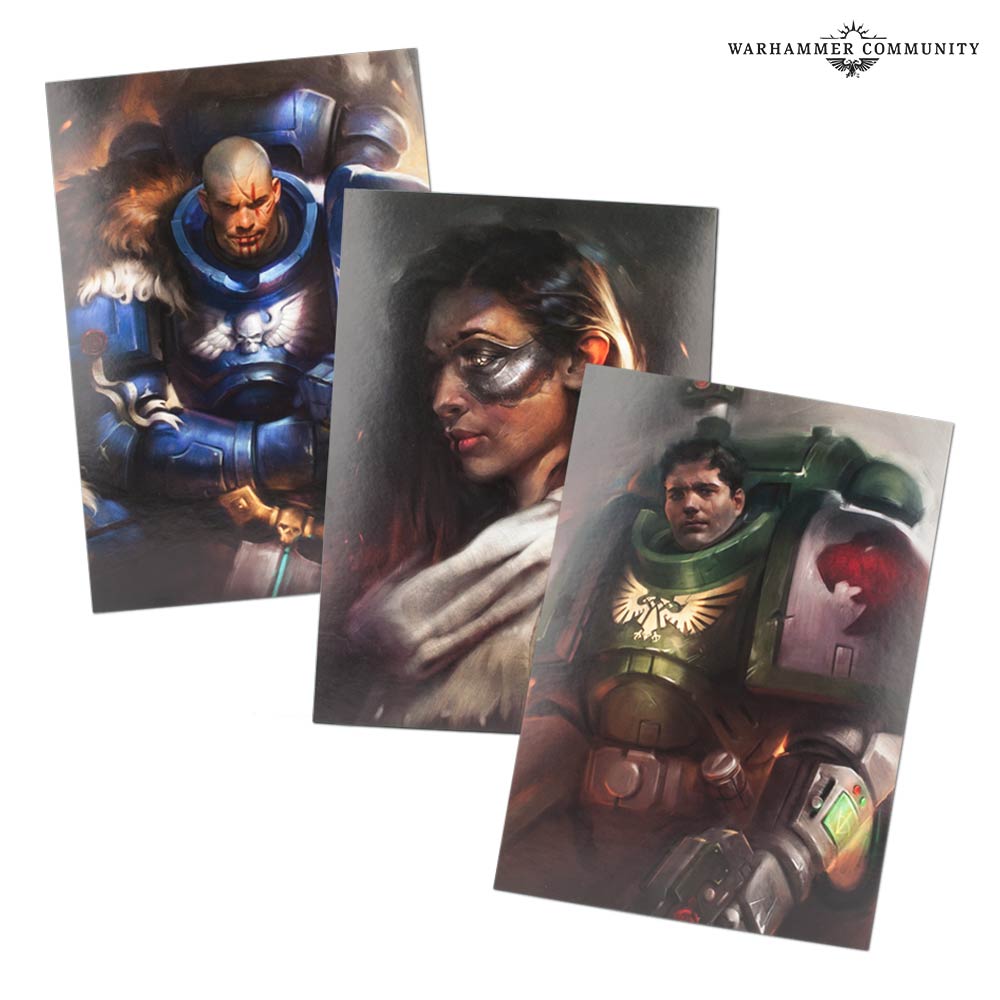
6. You choose some different point of view characters, who aren’t normally front and center focus in GW fiction, for example Octavia and Cyrene. How do you decide who you’re going to use as a protagonist or viewpoint character and how do you make sure they sound authentic?
If you look at a lot of historic fiction, especially the best stuff, it’s often not from the POV of the famous, big name characters – it’s written from the perspectives of people at those characters’ right hands. In The Warlord Chronicles by Bernard Cornwell, the protagonist is one of King Arthur’s most trusted warlords. In Gates of Fire by Steven Pressfield, the narrator is a slave squire, at Thermopylae with the Spartans. In Song of Achilles by Madeline Miller, the main character is Patroclus, Achilles’ lover, during the Siege of Troy.
I do the same thing in my work, first-person and third-person alike. The obvious first-person examples are Khayon and Anuradha. Khayon is one of Abaddon’s most trusted officers, close enough to the throne to get a good look at Abaddon and contextualise him in the setting, but distant enough to have his own context in the world. Anuradha is the same, only magnified: as a Chapter thrall, she’s experienced in war and ruthlessly capable, but still effectively a different species to (and awed by the transhumanism of) Space Marines. She sees their absolute inhumanity better than anyone, but also has unique insight into their moments of humanity.
It’s not a magic formula or anything, just a narrative angle. Like, take any story you can think of, and look at what perspectives make that story most interesting. Part of what made The Lord of the Rings so compelling was that the Ringbearer wasn’t one of the chest-poundingly badass and soulfully melancholy Dúnedain. He was a hobbit, with his friends, who didn’t necessarily want to be in the position he was in, but had to because the responsibility fell on his shoulders. It gave him a lot of insight that traditionally badass characters lacked. It also made characters like Aragorn shine in a new light.
Cyrene, a mortal confessor for a Legion of transhuman warrior-monks; that’s an interesting place to be. What a journey, right? What a responsibility. Octavia, the imprisoned Navigator aboard a pirate ship of superhuman heretics, is simultaneously a slave and the most powerful, important soul on the ship. What a freaking cool perspective that gives her on the whole deal. What do their perspectives say about the other characters in the story? What do their perceptions and their own contexts offer in terms of looking at more traditional 40K characters and factions and tropes?
That’s good stuff. The Devil is in those details.
7. Looking back at your work dealing with Astartes, namely, Spears, Helsreach, Black Legion and Night Lords, there is a common focus on the brotherhood between the Marines and their interactions with normal humans. What makes this theme so important for you when you write about Marines?
Because it’s real. This is a difficult question to answer because it’s like, “Why do you write about the sky being blue?” Well, because it is blue. Being blue is one of the sky’s defining elements.
Partly it’s that the relationship between humans and the Adeptus Astartes is endlessly, completely fascinating, and thoroughly nuanced. On the institutional level, with the Adeptus Terra and Astartes autonomy; and on the personal level, where Space Marines are myths to much of the Imperium, and terrifying transhuman angels of death to those even aware they’re real.
Humans and Space Marines being in the same circles contextualises both groups, and there are an infinite number of ways they can interact and see one another. That will never not be compelling to me. Plus, Space Marines interact with certain groups of humans a huge amount, especially Chapter serfs or Imperial commanders, and those are always tense, cool, socially and psychologically laden interactions to delve into.
As for the brotherhood thing, partly it’s that siblinghood is a fundamental component of real-world military life and the many historical orders that Space Marines are based on, so ignoring it would be doing the setting a disservice. Partly it’s that those bonds in various cultures and societies makes for interesting story hooks, virtues, flaws, and psychological dilemmas.
The brotherhood between Space Marines is also a defining principle in their hypno-indoctrinations, their Chapter Cults, and their daily lives. It’s their main relationship, consuming a vast amount of their lives on and off the battlefield. And it’s a relationship just as complex as any sibling situation is, diminished in some ways but amplified in others. That’s always awesome to explore.
8. In the foreword to Spears, you talked about going out and finding ex-service people, frontline medical staff, and others that have been through harrowing experiences in order to get details right. In the book we end up not only seeing Anuradha’s struggle to recover after being captured but also that even something as removed from humanity as an Astartes can suffer a form of PTSD. How did you figure out making the jump from real world experiences to science fiction and applying it in the way you did?
Like the previous answer, I always struggle with these kinds of questions because the answer is just “…it’s what I think about, and it would happen in the setting, so I write about it.” And I’m aware it must be boring as hell for anyone reading these answers.
I think there’s a compelling case for recovery (and the struggle to recover / potential for never recovering) being a fascinating factor in a universe like Warhammer 40,000. There’s that famous quote which Gav Thorpe has used a few times, which I’ll paraphrase here: “Superman is invincible, so how do you hurt a character like that?” and the answer, of course, is “Emotionally.”
It’s easy to look at Space Marines and see their process as definitive, just blanket-removing all humanity and leaving them flawless and perfect. But that’s massively missing the point. The point is (as with all of 40K) that the process is desperately, ignorantly flawed. It’s the flaws in the process which make it interesting. The Space Marine indoctrination process hammers and hypnotises and batters and bruises these people into living weapons, and that’s great for making incredible soldiers, but it doesn’t make them perfect. It gives them cognitive weapons against temptation and fear and the various fragilities of the human psyche… but it doesn’t make them immune to those things. Not outside the propaganda.
And, more crucially, it tears open other avenues for potential flaws, too. Vanity. Pride. Delusions of grandeur. All that stuff, many of which are exactly the ways in which Chaos worms it way into their hearts. Chaos isn’t a disease you catch. It’s a metaphysical threat that takes your virtues on the cusp of flaws, and gives them a little nudge. No one walks the Path to Glory because they think they’re evil. They do it because they delusionally think they can handle it, or they foolishly don’t realise they’re doing it at all.
And there are related questions to Adeptus Astartes psychology. What traumatises, or even affects a Space Marine cognitively, spiritually, or emotionally? We so often see their justified-but-deluded reasons for “falling”, as the impossible, unfair strictures of the Imperium threaten their autonomy, their authority, and even their existence. But what else is there? What’s it like to be stolen from humanity, turned into a weapon, and then find yourself in a position where the war you’ve been waging for centuries starts to reveal itself as hypocritical? What if the institutions you serve are increasingly corrupt? What if you’re mutilated in battle to the point you’re no longer the weapon you once were?
That last one especially: what the living hell would that do to a Space Marine’s psychology? All he is, is a weapon. What if the people using that weapon can’t be trusted? Jesus, what if that weapon breaks? What is a Space Marine then? Who is he?
I love these questions. This is the stuff I care about.
And that shit is real. This is what makes people people, so of course it’s what makes characters believable and nuanced. That shit matters.
9. Is there a conscious effort to turn Elara’s Veil into something like the Sabbat Worlds? Like a segmented slice of ADB 40K?
That would be cool… but it’s sort of the opposite, actually. Elara’s Veil is a conscious show of what life is like in the Dark Imperium. It’s not special or unique; that’s just how tough life is on that side of the galaxy.
It’s not been an easy transition in some ways, with some inconsistent detail on Imperium Nihilus and just how easy/difficult it is to cross the Great Rift. With the way release schedules work, a fair chunk of publishing goes through the process along parallel tubes, so to speak, which can make the end result a little choppy at times. It’s the nature of the beast, though.
Some of the perception so far is that the Indomitus Crusade is a cure-all, and the Imperium’s dark half is just a little bit worse than the normal half. The reality is that Imperium Sanctus is like the Imperium used to be–constantly besieged and embattled, not safe at all–and Imperium Nihilus is a darkly prophetic look at what the Imperium might become after a Chaos victory. A place of scattered, diminishing kingdoms crying out for reinforcements, unable to hold back the night for much longer.
It’s a bad, bad, dangerous, bad, really bad place.
10. In the Black Legion series, Abaddon appears almost mythically great to Khayon, his presence rivalling Horus’s clone. Is he (or they I guess) doing this on purpose, turning him into his hype man, so he can send him back to the High Lords and further enhance his legend? Like what he did to the Black Sword in book 2 but on another level? Did Abaddon seek him out originally with this in mind?
That’s definitely possible. The question to ask yourself in these kinds of situations is “Why?”
Say that’s true, for example. Why? What benefit is there, really, for doing that? Like sending the Black Sword to Terra. Why? That wasn’t to create hype or just Abaddon being a tool. Sure, it had psychological impact and overtones; I mean, damn, what a stylish way to inform the Imperium that the Emperor’s Champion was dead. But really, it was a formal declaration of war, tying back to historical medieval declarations of war. Abaddon had nothing but respect for Sigismund. He even pleaded with Sigismund to join him. And once it all went down, they treated the body with respect, as well as the Black Sword.
Plenty of times, you see Chaos Marines scavenging relics from the Imperium. Khayon, Lheor, and Telemachon all have weapons forged from Sanguinius’s melted down sword. It’s just what Chaos Marines do. They need gear, and they take it. Especially gear that means a lot to their enemies. So wouldn’t the Black Sword have made a freaking brilliant trophy?
But no. Abaddon sent it back to Terra. Was that to show off? Or was it a moment of knightly conduct, between brothers?
So why is Khayon there on Terra? What would telling a story like that to a few Inquisitors really achieve? Or is there more to it?
Partly, as well, there’s the fact that Khayon’s reaction to Abaddon is based on how all Chaos Marines (and, well, everyone) actually reacts to him. We’ve not seen it much during the years because the sources have been brief, but if you look at Codex Chaos from 2nd Edition (which is at the very heart of the Black Legion Series) Abaddon was a deadly serious deal there. He was Genghis Khan. Think how absolutely terrified a city leader was, really, when he met Genghis Khan back in the 1200s. When the Great Khan rocked up and said “Surrender to me, utterly, or I will murderise your entire civilisation.” And they knew he not only could, he absolutely would. Hell, he’d already done it to the last dozen cities in the line before yours.
That’s Abaddon. The Daemon Primarchs have phenomenal power, but are enslaved to the Gods. Abaddon refuses to be a slave. He’s free in a way the Daemon primarchs aren’t. That’s literally the core of his character, the point of his place in the lore. And he has forces that vastly eclipse the Daemon Primarchs’ own forces. He’s the one soul that has managed to unite the armies of Hell. Often temporarily, yeah. It’s Chaos, after all. But that’s what makes him unique. He can do what no one else can.
Horus had half of the Imperium on his side, and died like a deluded punk. Abaddon started with nothing. He’s the ultimate underdog. The Sons of Horus, his Legion, were on the edge of extinction. Abaddon has built the biggest Legion from scratch, in literally hellish circumstances. He’s the only one that also manages to unite the others, in the banners of the Black Crusades. This is the centrepiece of his lore. It’s what his character is all about.
The Black Legion Series really stands on the shoulders of giants, though. I benefited immensely from tracking down various 40K creators and ancient sources, and really getting the lowdown on who Abaddon is, why he’s that way, and – most importantly – who he was supposed to be in ways that maybe got lost in translation over the years, especially in terms of memes.
So when I have the guys that invented Abaddon saying “He’s this beacon of constantly replenishing Chaotic power that’s like looking at the Emperor, except the chaotic version of that blinding aura, and he’s constantly showered with gifts by the Gods as they try to buy his allegiance…” then that tends to resonate a little more with me than someone online who already dislikes the character, snorting and posting something about “Failbaddon” because he bought into the memes instead of the lore.
Abaddon isn’t perfect. He has weaknesses, doubts, failings, flaws, and they’re all in the open. And I’m the last person to argue that he’s been presented perfectly in the past, trust me. But when the series is putting him in the context of why he’s such a big deal, it’s really a situation where Khayon is just kinda telling the plain truth. Which leads neatly into…
11. Are we going to see more hints of Khayon contradicting himself in the future books?
Oh, definitely. One of the beautiful elements about very informed Chaos Marine characters is that they’re in a position to speak with the most authority on the complexities of 40K’s metaphysics, and are simultaneously the most delusional about it all.
It’s a shame when a few people (usually with favourite characters or factions that Khayon contextualises and/or disrespects) dismiss him as “He’s an unreliable narrator, he’s just lying.” Like… not really. Sure, all 40K characters are unreliable narrators. Did all of this stuff happen, or is he just telling a plausible story? I like that level of doubt, and it’s purposefully baked in, but Khayon is also quite literally explaining how a lot of the setting works because he’s in a rare position to see that stuff as part of his daily life. A lot of the setting involves explicit and implicit contradictions.
The contradictions in Khayon’s words are carefully-planned, always about things rooted deep in the setting’s guts. Like the gods not being real, or being real but hating humanity, or being real but loving humanity. When Khayon says stuff like that, he’s being nakedly honest. All three of those things are absolutely true.
12. The Marines in your personal collection always mix in a ton of armour marks and this is kind of reflected in the books as well, especially Talos’ squad. Is the armour the Marine wears an expression of him or is there some other thing going on there? How do you roughly figure out a Marine’s distinctive “look”?
It’s just a realism thing. Space Marines are deployed for extended periods, using suits of armour that are patched up countless times over centuries—sometimes millennia–during lifetimes of the most horrendous warfare imaginable. It’s one of the little realities of the setting that sometimes gets lost in the mix. The best example I can remember is the Badab War sourcebooks by Forge World. If you look at the art references in those, whole squads show up in mismatched armour marks, with even individual suits made up of several marks at once.
(My guess is that as the Primaris range expands, we’ll see this more and more going forward, just like in the older Space Marine range. Intercessors are all currently Mark X, sure, but the current Tactical Squad box, which is ostensibly Mark VII, has options for 50% of its Marines to be built with Mark IV, V, VI, and VIII bits.)
Even in the Horus Heresy, where there’s a stronger precedent for mono-mark squads, it’s still a bit dicey. Forge World always made a big deal out of weathering being so harsh and the painting style being more realistic because, as a conflict, these Marines were deployed in impossibly horrendous battles for ages and ages, away from easy resupply. But then… the best way to represent that, lore-wise, is jury-rigged repairs on armour and combining armour marks. Especially as the Heresy goes on. So, again, it’s a realism thing.
I need to get out of the habit when it comes to kitbashing Marines because it’s hellishly expensive to need, like, six different boxes to make a 5-man Tactical Squad. Plus, I never paint them anyway, so they eventually crumble to pieces, succumbing to glue-decay on what John French calls my “Shelf of Shame.”
13. Outside of working for Black Library, you’ve also worked on the lore for the GW studio. What was it like working on the AoS Slaves to Darkness battletome vs doing something for BL?
It’s a difference in approaches. With Black Library, 99% of the time I go to my editors and say “I’d like to write about Whatever,” and they say “Sure.” I’ll throw in a pitch which will be between three sentences long and a page or two, but there’s an unspoken knowledge that this attempt at professionalism is just a formality, a bone thrown to the jaws of the commissioning process. In reality, we all know what I write will probably have nothing to do with any pitch, or change beyond recognition from it.
With the Studio, I was lucky enough for them to approach and say, “Can you do a bunch of stories for the Slaves to Darkness battletome? Here’s a .pdf of the unfinished book with all the minis blanked out. Can you do a story for each subfaction?”
They were also very kind and said on social media that they asked me to write in a battletome, when the reality is that I begged them endlessly until they let me. I’m not even ashamed. It was worth it. Being part of an army book is something I’ve always wanted to do, and I’m hoping to get another shot at it. I’ve not tried begging yet…
I was dead proud of those stories, though I admit I was nervous about them, too. I wrote four stories effectively about Chaos screwing itself over, which is what Chaos always ultimately does, but I was a little scared most readers would want tales about their faction kicking arse and taking names. Thankfully the opposite was true; the feedback I’ve got from those stories has been awesome and super-humbling.
14. Is there a character whose story you’d really love to progress in that kind of context, like taking Abbadon’s story in new directions?
I’m not really a metaplot kind of guy. In a lot of ways, I don’t care what’s happening in the metaplot, with Named Character X doing Y over in Region Z. I worry that if you focus on that too much, it shrinks the universe to unbelievable degrees. Like how Boba Fett was “the most famous bounty hunter in the galaxy.”
Like, the galaxy is a big-ass place. Come on.
My gaming group doesn’t use Named Characters in our games, we use our own generals, and in my writing Big Names are usually cameos to reflect something about the main characters or the story in question. Even with Abaddon, well, there’s a reason it’s called the Black Legion Series, not the Abaddon Series. Like I mentioned before, most of my writing is from the perspective of characters around those Big Names, not actually inside their heads. There are always exceptions, but as a general rule, I stick to it.
My personal approach to writing 40K is that I want to take the classic stuff, the established tropes, the things we all love about the setting, and contextualise them, ground them, show what it’s like to experience them. New ideas are ten a penny. They’re free and everywhere. I can do non-40K stuff to spend my new ideas here, there, and everywhere. I write 40K to show the setting I love through the lens of its lived-in characters, and also hopefully show why X, Y, or Z element is cool if someone previously thought it sucked.
15. On a scale of “rad” to “extremely cool and good”, how has it been working on Angels of Death and/or the other Storyforge bits?
There’s a lot I can’t say here. It’s been a wonderful process, I can at least say that. The amount of potential in GW’s new media department is insane, and if things keep going and evolving along the current track, we’re all in for some exciting times. It was especially cool to see how they hired Richard Boylan to lead the animation team on AoD, after his breathtaking adaptation of Helsreach. The fans wanted it, and they got it.
There was a fairly sizeable team on Angels of Death – not ‘Horus Heresy’ big, but about ‘Siege of Terra’ big. It’d be churlish of me to say I did X or Y when it was very much a group effort, and I did significantly less work than some of the others. A lot of the ideas stage, for example, came in the form of us all sitting in a room and brainstorming, and I’m pathologically bad in those situations. I’m more of a “Give me a few days after the meeting and I’ll write you a squillion ideas” kind of guy, which means in big meetings I tend to stay pretty quiet. My brain just doesn’t work that way; I need to turn every rock over about fifty times before I can get a feel for where they go in the garden.
I learned a lot from the series, and it was especially interesting to see the media department crew shuffling and reshuffling things, reacting to available assets, and so on. I picked up a lot of stuff just from talking to people in the industry as well, unrelated to AoD, and something that’s hard to see from the outside is just how expensive animation is. There’s often a perception of “Hey, this person/company does great stuff, hire them and that’s that.” But it’s not uncommon for some tiers of animation to cost in the region of £1,500,000 for 20-30 minutes. Let’s be real, Games Workshop makes toy soldiers. It’s a niche industry. If you wanted a full series at that cost, not only is it out of their reach, it’s also just way, way beyond the level of acceptable risk, and that’s not even factoring in the ultimate cost/benefit.
I’m looking forward to the Hammer & Bolter anthology, too. That’s going to show some beautiful, unexpected perspectives in 40K.

16. What have the challenges been in going from working in prose to a script? Is it similar to working on audio dramas or comics?
I did a lot of screenwriting on my writing degree. In a lot of ways it’s easier than prose, because you’re stripping everything down to ideas, without the descriptive nuance or time-consuming process of wanting the prose to sound a certain way. Writing a novel means you’re trying to present everything, alluding to things or outright stating them, both in your voice and the voice(s) of the characters. It’s a lot to consider.
In contrast, a lot of screenwriting is suggestion and skeletal description for other people in other departments to bring to life. That’s freeing, and it’s fun, but it’s also hard at times to cut down your word count to the bare minimum. The coolest part is a practical one: it forces you to pare down everything about a character, hitting their beats without too much messing around. It’s a stripped-down process, but not a shallower one.
It’s lovely working in a team, too. There’s such a great sense of excitement turning your words over to a process you trust. It’s like when you have a great audiobook narrator. There are people that have never read my work, but have had it read to them, time and time again. I love that. It’s so weird and interesting to imagine. There’s no right or wrong way to enjoy something.
17. Totally a selfish question to ask here, but do you have any quick words of advice or words of wisdom for people cooking up their own Chapters or Chaos warbands at home?
This could be its own multi-thousand word article. I’ll try to keep it brief, though.
Obviously the famous advice is “Pick a theme,” and blah blah blah. There’s not much to say there that hasn’t already been said. I tend to counsel following of these two lore-tastic tenets:
Tenet #1:“You’re unique. Not better.”
Tenet #2:“It doesn’t matter who your daddy is.”
The first tenet is simple. Whatever your Chapter is great at, they have other aspects they’re not so great at. If they specialise in a certain way of warfare, then they’ve neglected other elements in order to specialise. If they’re generalists, like most Space Marines are, they’ll still have various interesting elements – something about their gene-seed, their fleet, or their homeworld. Interesting elements that make them stand out but, crucially, don’t make them immediately “better” than other Chapters.
Here’s an example. There are three Chapters called the Triarchy. They’re all Blood Angel Successors: the Charnel Guard, the Red Seraphs, and the Angels Numinous. They’re Alan Bligh’s, John French’s, and my own personal Chapters, respectively.
The Charnel Guard are the gothic and undead elements of vampirism, amped up to 11. They’re black-armoured, corpse-like, stasis-crypt-using murderers that have countless blood rituals they don’t tell anyone about. The Red Seraphs are the Renaissance and the artistry of Rome in power armour. Their armour is ornate, they try to overcome the Flaw in their gene-seed by amplifying their angelic qualities and focusing on mental and spiritual purity. And the Angels Numinous are the warlike element of mythological angels – they’re the Armies of Heaven that bled and bled and bled as they fought Satan’s Fallen Angels. They wear armour of dark bronze, have a vaguely Persian culture, and sacrifice their Death Company in battle as a blunt instrument, not as honoured brothers but as spiritual failures.
Three Chapters: all angels, all vampires, all just as violent and dangerous as each other, but each with specific cultural angles that make them credible and unique without making them “better” than anyone else.
The second tenet is a little more complex and wide-reaching.
⅔ of all Chapters are descended from the Ultramarines.
It’s stable gene-seed. That’s it. That’s all. It doesn’t mean ⅔ of Chapters are basically just Ultramarines. It doesn’t mean that ⅔ of Chapters think the Ultramarines are great.
There’s a habit for Successor Chapters to be carbon copies of their First Founding Legions, and a lot of fans and readers take that too far. It makes sense in the context of the lore because almost all of the famous Successor Chapters we see are 2nd Founding Chapters, and those guys very much were formed in the legacies of their Legions. They directly came from those Legions, so that was kinda the point. 2nd Founding Chapters often adhere strongly to their Legion’s aesthetic (Crimson Fists; all the Blood Angel Successors), or have the same sects and subfactions (Dark Angel “Unforgiven” Chapters) or occasionally take a specific element of their Legion’s deal and take it to 11 (Black Templars and Flesh Tearers).
But after the first couple of Foundings, who your daddy was starts to mean much less as time goes on. Admittedly, “Just like their parent Chapter…” is an easy sell and a popular aesthetic, but sources like the Badab War books from Forge World show how many Chapters don’t even know their exact lineage, or simply don’t care.
The Emperor’s Spears are a lesson in this, too. Nothing shows someone misses the point more than when they say “Who are they? They look cool. Oh, they’re an Ultramarines Successor? Eh, whatever. I hate the Ultramarines.”
The Emperor’s Spears have next to nothing to do with the Ultramarines, just like most Chapters descended from that bloodline. (In fact, when the Spears have crossed paths with the Ultramarines, they’ve gotten annoyed and threatened to throw down with them – which again isn’t unique to the Spears.)
If you like Space Marines, you like Ultramarines Successor Chapters. So stop worrying.
The flip side of the coin, by the way, is that using Traitor gene-seed isn’t really as big a deal as characters in the universe think it is. The Imperium is scared that it’s a big deal, because the Imperium is an ignorant tyrannical fascist theocracy that prays to machines and purges its own history for fear of actual monsters popping out of a reality behind our own universe. Some readers understandably assume it, too – when Chapters go wrong, like in the Cursed Founding, there’s often a nudge and wink towards “Well, they were Traitor gene-seed Chapters.”
Maybe! But also… not so much. There are several Chapters with Traitor gene-seed doing just fine, and no one knows they’ve got Traitor gene-seed because it doesn’t really mean anything.
Recently, in the metaplot, you had Guilliman saying Cawl couldn’t use Traitor gene-seed, followed by the possibility that Cawl did it, anyway. Cool in-universe, but as readers and fans, we know it’s been done secretly in the past and made no difference.
Or spin it around! Let’s take it as read that maybe Traitor gene-seed does mean something major, after all. Let’s say all the Cursed Founding Chapters aren’t cool mysteries and it’s really as simple as “They used Traitor gene-seed and that contains deep spiritual darkness,” (which is very blunt… but still cool in its own way.) But in that case, it’s an extremely bad thing and your Chapter is basically doomed.
Seriously, if your Chapter has interestingly unstable genetic elements, that’s awesome. Gene-seed degrades, it mutates, it changes over time and reacts to various human cultures and planetary environments. That’s cool and far more imaginative than the other option. The Crimson Fists can’t spit acid or go into hibernation. That’s awesome and flavourful. That’s a gene-seed flaw that makes a cool and characterful difference. An obstacle to overcome, and credible in the setting.
The second tenet applies to Chaos warbands, too. With Chaos warbands you can have Renegade Chapters, which are self-explanatory… but you also have three tiers of Legion-ness for warbands originating from the Traitor Legions. And in their case, who your daddy was can mean as much or as little as lineage means to loyalist Chapters.
The Legion Warband is the usual default. In this case, say, a Word Bearer warband will have its own name, history, culture, past heroes, famous battles, allies, rivals, and outright enemies, all from living an eternity in the Eye of Terror and raiding the Imperium. They might have almost nothing to do with their parent Legion, be actively hostile to them, or closely allied. It all depends on individual leaders and rivalries.
Examples here would include the Black Brethren of Ayreas, who are a Black Legion warband involved in the Siege of Vraks, or the Warband of the Broken Aquila, Talos’s force in the Night Lords Series. Death Guard Vectorums are another good example, sort of bridging the gap and highlighting the crossover with the next tier, showing that individual legion warbands don’t need to adhere to their parent Legion’s colour scheme.
The second tier, slightly less common among fans but fairly common in the setting, is the Legion, But… Warband. These are ostensibly still part of their parent Legions, or at least usually allied with them, but are a little more independent. They usually have their own modus operandi, maybe focusing on a specific element of their Legion’s ideology, making it into a speciality – and they’re likely to have their own colour scheme more varied than the usual schemes seen among the parent Legion.
Examples here would include the Sanctified (Khorne-worshipping Word Bearers) and the Steel Brethren (independent Iron Warriors).
The third tier is the Legion? No Thanks. Warband. These are, for all intents and purposes, whatever you want to be. They’ve turned their backs on whatever their original Legion was, to the point they reject everything their brothers stand for. Ironically, the best example of this is the early Black Legion, who wanted nothing to do with the almost-extinct, humiliated Sons of Horus. Another cool example would be the Brotherhood of Darkness (Night Lords, going down a more daemonic path).
You can do basically anything with these ones, so go wild. What have they seen, out there in the endless tides of unreality? How has living in Hell changed them? What did they bring back with them?
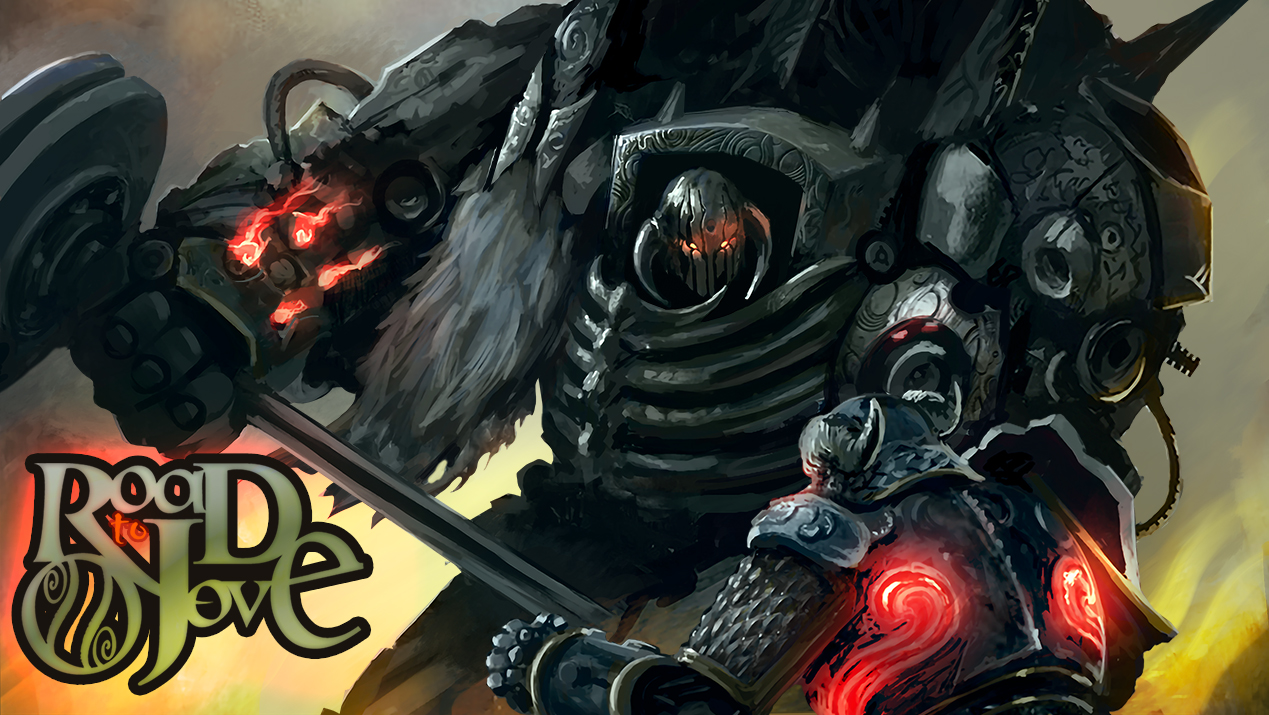
18. Finally, is there anything coming out that you want to promote? Is there a chance of a non-BL ADB book series in the future?
I’ll get to my own stuff. I hope. Unless I die early… and in these thrilling days of COVID-19, you never know.
I don’t think I’ll ever stop writing 40K unless BL get sick of me, but I do have my own non-40K stuff on the go, getting closer and closer to existing.
I’d like to mention my webcomic The Road to Jove, which is the thing I’m most proud of in the whole world. I’m working on another two webcomics as well, and TRtJ is getting a new website soon, but for now you can find it at www.roadtojove.com.
We’re about to relaunch it after a long hiatus, so I’m peachy keen to get back to regular work on it.
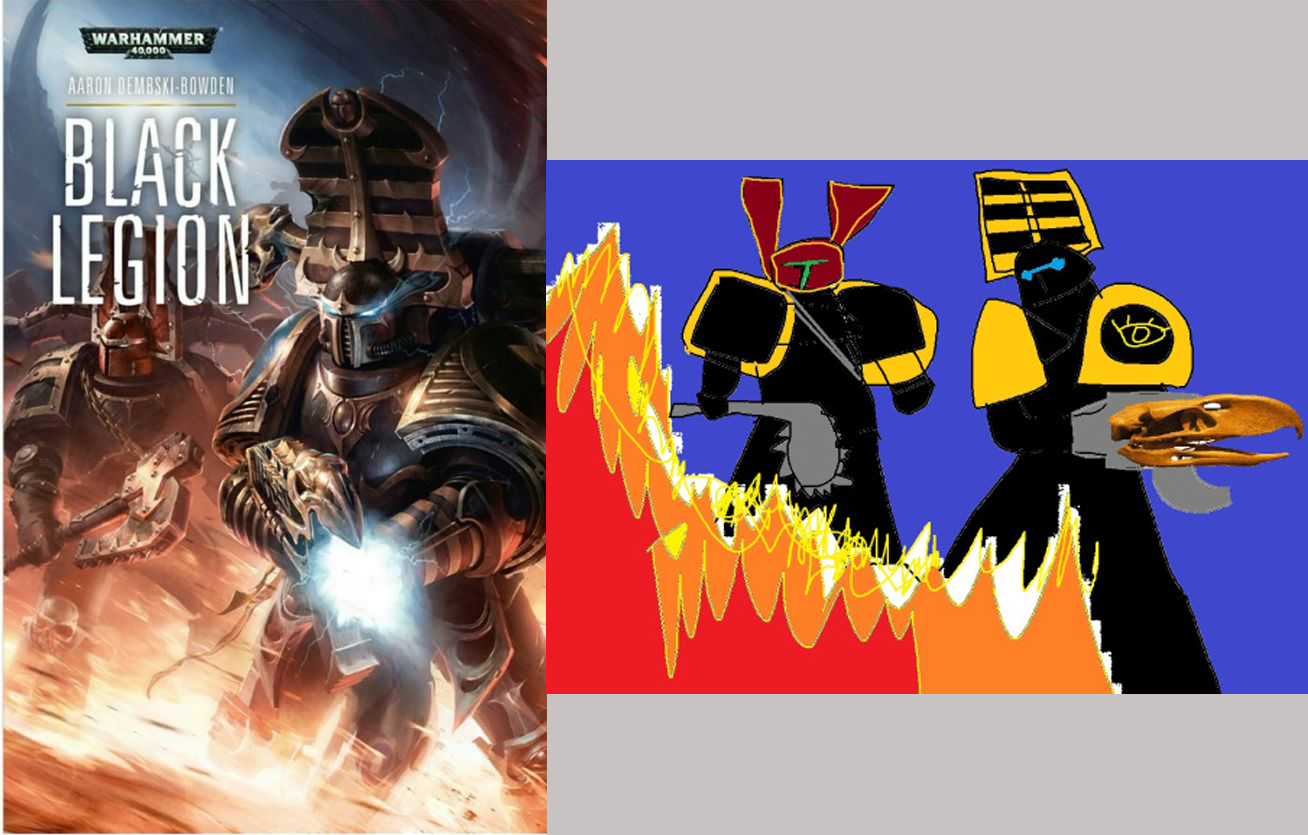
19. Are the MSpaint covers ever going to come back?
I forgot to do one of those for Spear of the Emperor, didn’t I? Damn it…
I’ll do one for Black Legion III. And the one for my Siege of Terra novel will hopefully be absolutely boss.
20. What is cool and good?
My kids, Alexander (8) and Savannah (4). They’re the two halves of my heart, incarnated outside my body.
They’re also annoying and awful but, like, 65% of the time they’re cool and good.
I realise you wanted a funny answer here, but this interview’s word count is about 10% of a novel now, so I’m tired and felt like being serious.
I’m totally going to go have a nap. You can’t stop me.
